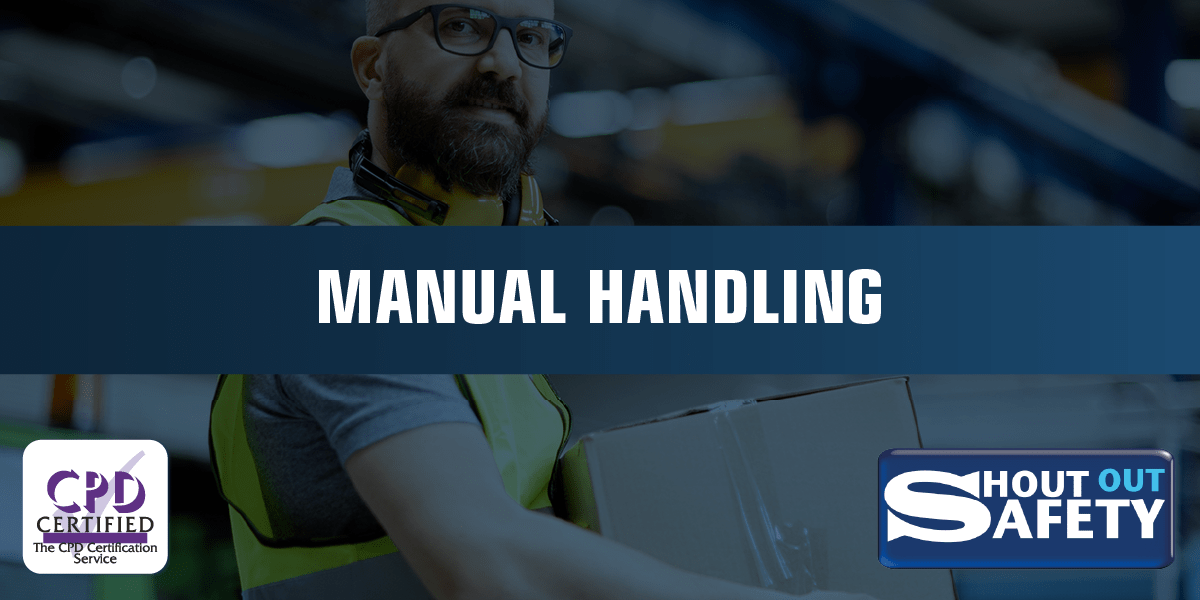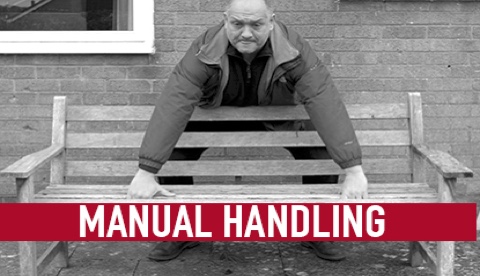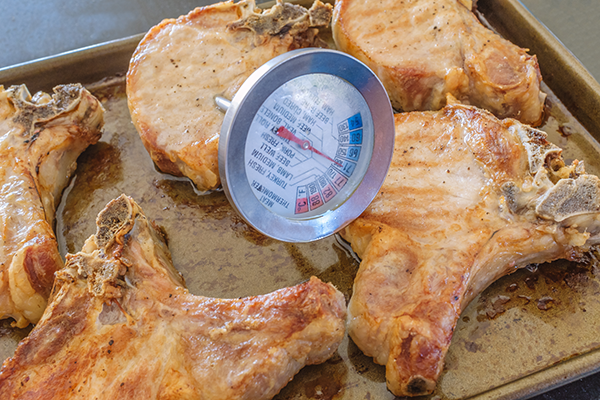Estimated reading time: 5 minutes
Table of contents
What Does TILE Stand for in Manual Handling?
In the realm of occupational health and safety, especially when addressing Manual Handling tasks, the TILE acronym is indispensable. In this article we answer the question “what does TILE stand for?”
Representing Task, Individual, Load, and Environment, each aspect of TILE is crucial for a thorough risk assessment in Manual Handling activities. Implementing TILE in Manual Handling operations is key to enhancing safety and efficiency.
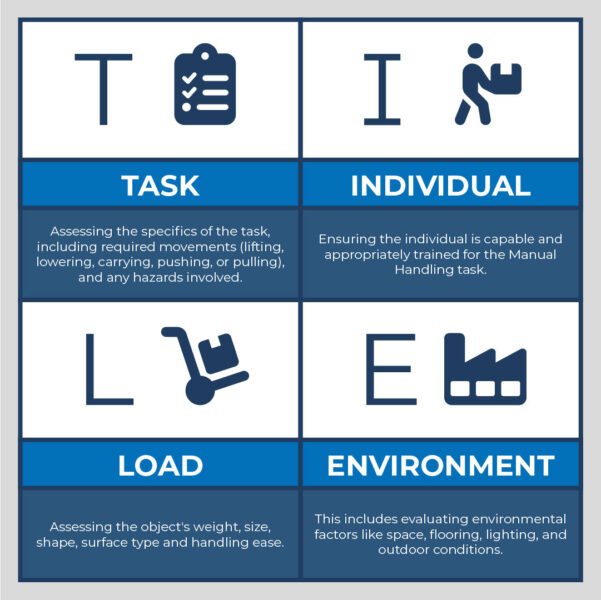
T in TILE: Task Analysis in Manual Handling
The ‘T’ in TILE involves a comprehensive analysis of the Manual Handling task. This assessment examines the specifics of the task, including required movements (lifting, lowering, carrying, pushing, or pulling), and the context of these activities. Task analysis helps identify potential hazards and determines the necessary safety measures and ergonomic practices.
I in TILE: Individual’s Capabilities in Manual Handling
The ‘I’ in TILE emphasizes the individual executing the Manual Handling task. It involves assessing the person’s physical strength, fitness, health, and ergonomic requirements. Ensuring the individual is well-suited and appropriately trained for the Manual Handling task is essential to minimize injury risks and enhance efficiency.
L in TILE: Load Assessment in Manual Handling
The ‘L’ in TILE focuses on evaluating the load in Manual Handling operations. This includes examining the load’s weight, size, shape, and handling ease of a Manual Handling task. Understanding the load’s characteristics is crucial in assessing its risks and determining the safest, most efficient handling methods.
E in TILE: Environmental Factors in Manual Handling
The ‘E’ in TILE pertains to the environment where the Manual Handling activity occurs. This includes evaluating environmental factors like space, flooring, lighting, and outdoor conditions. Proper environmental assessment ensures that Manual Handling activities are performed under safe, optimal conditions.
TILEO in Manual Handling: Beyond Basic Risk Assessment
TILEO extends the TILE framework by incorporating ‘O’ for Other factors in Manual Handling risk assessment. This includes broader considerations affecting Manual Handling, such as the duration and frequency of tasks, workspace constraints, and specific operational requirements, for a more comprehensive risk assessment.
LITE in Manual Handling: A Different Perspective
LITE offers a different perspective from TILE, rearranging the components to Load, Individual, Task, and Environment. This variation accommodates diverse Manual Handling considerations and organizational preferences, upholding the fundamental principles of safe Manual Handling.
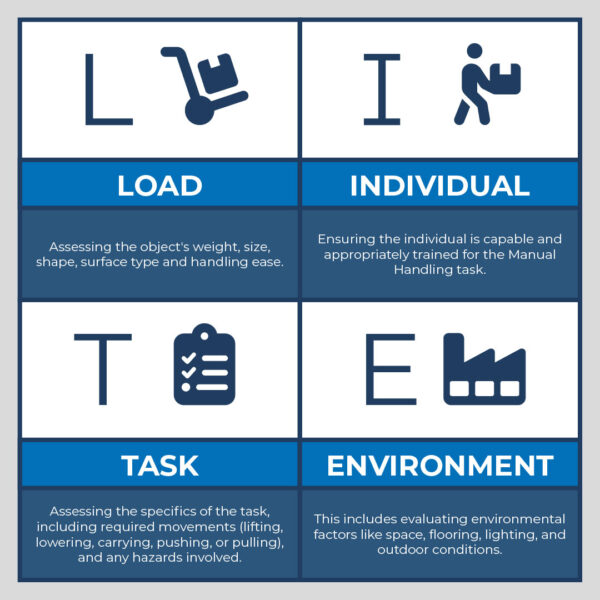
Real-World Applications of TILE and TILEO in Manual Handling Activities
Now that you know “what does tile stand for?”, it is important to know how to apply it in real life. Applying TILE and TILEO in diverse workplace scenarios, particularly Manual Handling activities, is critical for safety and efficiency. For example, in healthcare settings, applying TILE involves assessing tasks such as moving patients or equipment, considering healthcare workers’ capabilities, evaluating the load (patients or equipment), and examining the hospital environment and other relevant factors.
Similarly, in retail environments, TILE and TILEO principles guide tasks like stocking shelves or handling merchandise. This involves detailed task analysis, understanding the employees’ physical capabilities, assessing the merchandise as a load, and considering the store’s layout and other pertinent factors.
The Importance of Manual Handling Training
Comprehensive Manual Handling training, emphasizing TILE and TILEO principles, and good manual handling techniques is vital in reducing injury risks. This training is essential for compliance with health and safety regulations and enhances workplace productivity and morale. Shout Out Safety’s online Manual Handling training courses offer extensive knowledge and practical applications of these principles.
Benefits of Proper Manual Handling Training
Proper training in Manual Handling, particularly courses that emphasize the TILE and TILEO principles, offers numerous benefits:
- Injury Prevention: Training reduces the risk of injury, particularly musculoskeletal disorders, by teaching correct handling techniques and minimizing Manual Handling hazards .
- Legal Compliance: Adhering to safety regulations and guidelines, including those outlined by the Manual Handling Operations Regulations 1992, is crucial for legal compliance.
- Enhanced Productivity: Efficient Manual Handling techniques lead to more productive work practices, as workers spend less time dealing with injuries or inefficient methods.
- Improved Morale: A safe workplace boosts employee morale and confidence, knowing that their health and safety are prioritized.
- Cost-Effectiveness: Reducing injuries leads to lower healthcare costs and less time off work, benefiting both employees and employers financially.
Need a Manual Handling Course?
Shout Out Safety’s online training courses provide robust instruction in Manual Handling, incorporating TILE and TILEO principles. Our engaging CPD accredited, expert-designed video courses ensure learners thoroughly understand and can effectively apply these principles in various scenarios, enhancing workplace safety and efficiency, through teaching good Manual Handling practices. Through our interactive training courses, many questions like “what does tile stand for?” are answered, helping you to fully understand what to do when it comes to workplace safety.
Conclusion: What does TILE stand for?
In conclusion, TILE and TILEO acronyms are essential in occupational health and safety, especially for Manual Handling. The structured assessment of Task, Individual, Load, Environment, and Other factors ensures a comprehensive risk analysis, enhancing safety and efficiency.
Real-world applications demonstrate the adaptability of TILE and TILEO across diverse workplaces, from healthcare to retail. Emphasizing Manual Handling training, such as Shout Out Safety’s online courses, underscores the principles’ importance in preventing injuries, complying with regulations, improving productivity, boosting morale, and reducing costs.
By integrating TILE and TILEO, organizations prioritize workforce well-being, ensuring legal compliance and fostering a safety-oriented culture. This strategic investment benefits both employees and employers, making Manual Handling practices in the UK safer and more efficient.


